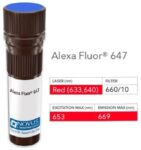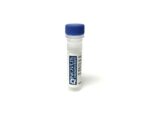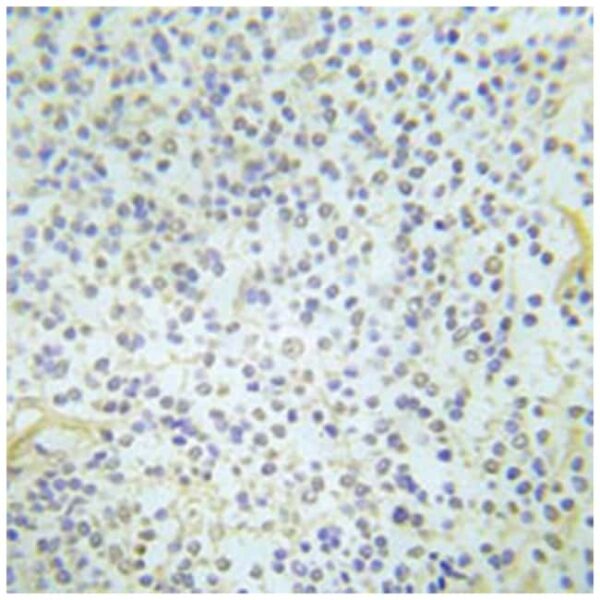Description
Description
The ABL1 protooncogene encodes a cytoplasmic and nuclear protein tyrosine kinase that has been implicated in processes of cell differentiation, cell division, cell adhesion, and stress response. Activity of c-Abl protein is negatively regulated by its SH3 domain, and deletion of the SH3 domain turns ABL1 into an oncogene. The t(9;22) translocation results in the head-to-tail fusion of the BCR (MIM:151410) and ABL1 genes present in many cases of chronic myelogeneous leukemia. The DNA-binding activity of the ubiquitously expressed ABL1 tyrosine kinase is regulated by CDC2-mediated phosphorylation, suggesting a cell cycle function for ABL1. The ABL1 gene is expressed as either a 6- or 7kb mRNA transcript, with alternatively spliced first exons spliced to the common exons 2-11. [provided by RefSeq
Specifications
| Antigen | ABL1 |
| Classification | Polyclonal |
| Description | Rabbit polyclonal antibody raised against synthetic phosphopeptide of ABL1. |
| Formulation | In 20mM PBS, 0.15M NaCl, pH 7.2 (0.01% sodium azide) |
| Gene Accession No. | P00519 |
| Gene Symbols | ABL1 |
| Immunogen | Synthetic phosphopeptide corresponding to residues surrounding Y204 of human ABL1. |
| Regulatory Status | RUO |
| Gene ID (Entrez) | 25 |
| Target Species | Human, Mouse, Rat |
| Form | Liquid |
| Applications | ELISA, Immunohistochemistry (PFA fixed), Western Blot |
| Conjugate | Unconjugated |
| Dilution | Western Blot (1:500-1:1000) Immunohistochemistry (1:50-1:100) ELISA (1:4000) The optimal working dilution should be determined by the end user. |
| Gene | ABL1 |
| Gene Alias | ABL/JTK7/bcr/abl/c-ABL/p150/v-abl |
| Host Species | Rabbit |
| Quantity | 100 μg |
| Primary or Secondary | Primary |
| Test Specificity | This antibody detects endogenous levels of ABL1 only when phosphorylated at tyrosine 204. |
| Content And Storage | Store at 4°C for three months. For long term storage store at -20°C.Aliquot to avoid repeated freezing and thawing. |








 NANOS1 Antibody, Novus Biologicals
NANOS1 Antibody, Novus Biologicals